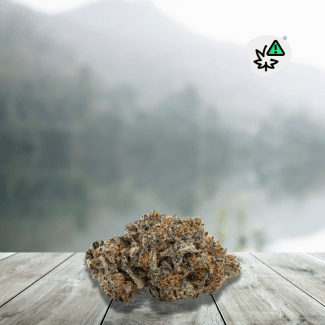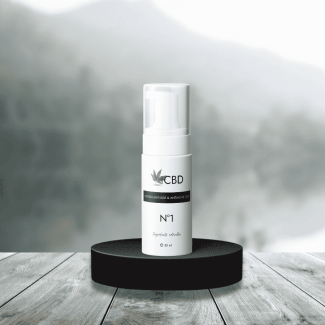
Cervical osteoarthritis, often referred to as cervical osteoarthritis or cervicarthrosis, is a common pathology affecting the joints of the neck. It is mainly characterized by pain, stiffness, and reduced mobility. Faced with these symptoms, many people are looking for solutions to relieve their pain and improve their quality of life. Among promising natural options, CBD (cannabidiol) is attracting attention and is the subject of extensive research. This article aims to explore the virtues of CBD and its potential in the management of cervical osteoarthritis.
Understanding cervical spondylosis
Cervical spondylosis is caused by the wear and tear of the cartilage in the joints of the neck due to various factors such as age, genetic abnormalities, repeated trauma or previous cervical injuries.
Symptoms of cervical spondylosis
This condition results in:
- Neck and shoulder pain, which may extend to the arms and hands.
- Stiffness and limitation of neck movements.
- Audible crackling sounds during neck movements, a sign of bone friction.
- Headaches, dizziness, or a feeling of unsteadiness.
What is CBD?
Cannabidiol , or CBD, is a non-psychotropic constituent of cannabis. Unlike THC, known for its psychoactive effects, CBD is recognized for its safety and good tolerance, even at high doses. It also has therapeutic potential, particularly against pain, inflammation and various neurological disorders.
The mechanisms of action of CBD
CBD interacts with the endocannabinoid system (ECS) via several receptors:
- CB1 receptors, in the brain and central nervous system.
- CB2 receptors, in the immune system and peripheral organs.
- TRPV1 and PPARγ receptors, playing a role in the modulation of inflammation and pain. It can also stimulate the production of endocannabinoids, regulating pain and inflammation.
CBD and cervical spondylosis: scientific evidence
Preclinical research indicates that CBD may be effective for pain and inflammation related to cervical spondylosis.
Reduction of pain and inflammation
A 2016 study showed that CBD reduced inflammation and pain in a rat model of osteoarthritis, decreasing sensitivity and signs of inflammation.
Reduced joint swelling
In 2014, research found that applying topical CBD decreased joint swelling and pain in rats.
Improved tissue regeneration
Work from 2016 suggested that CBD promotes the proliferation and differentiation of cartilage cells, providing an avenue for tissue regeneration in cervical spondylosis.
CBD: forms of administration and dosage
CBD is available in various forms suitable for the management of cervical spondylosis:
- Oils and tinctures : Sublingual absorption for optimal bioavailability.
- Topical : Local application to the skin to target pain and inflammation.
- Capsules and tablets : Simple and discreet oral intake.
- Inhalation : Rapid absorption by the lungs, although not recommended for certain patient profiles.
Consultation with a healthcare professional is recommended to determine the appropriate CBD dosage, based on the patient's condition and response to treatment.
The integration of CBD into the management protocol for cervical spondylosis represents a promising avenue for those seeking to relieve their symptoms naturally. Although research into CBD and cervical spondylosis is still ongoing, preliminary results indicate significant potential to reduce pain, inflammation and improve the quality of life of those affected.
However, it is essential to note that CBD does not replace conventional medical treatments but can be considered as a therapeutic complement. Before starting any CBD treatment, it is crucial to consult a healthcare professional to assess the potential benefits and risks based on your personal situation. This approach is even more important for people already taking other medications, because CBD can interact with some of them.
In addition to medical monitoring, adopting a healthy lifestyle, including a balanced diet and appropriate regular physical activity, can help manage the symptoms of cervical spondylosis. Regularly engaging in gentle exercises, such as yoga or swimming, can help maintain neck flexibility and mobility.
For those who decide to use CBD, it is recommended to start with a low dose and gradually adjust it depending on the effects experienced. Monitoring symptoms and responses to CBD is a key step in identifying the most effective dosage for each individual.
Conclusion
Cervical spondylosis is a complex condition requiring multidisciplinary care. In this context, CBD presents itself as an interesting complementary option thanks to its anti-inflammatory and analgesic properties. Scientific advances will continue to unveil the potential of CBD in the treatment of cervical spondylosis, providing new perspectives for those seeking relief. Remember, the safest approach is to have an open dialogue with your healthcare professional, who can guide you toward the best treatment options for your unique situation.
















